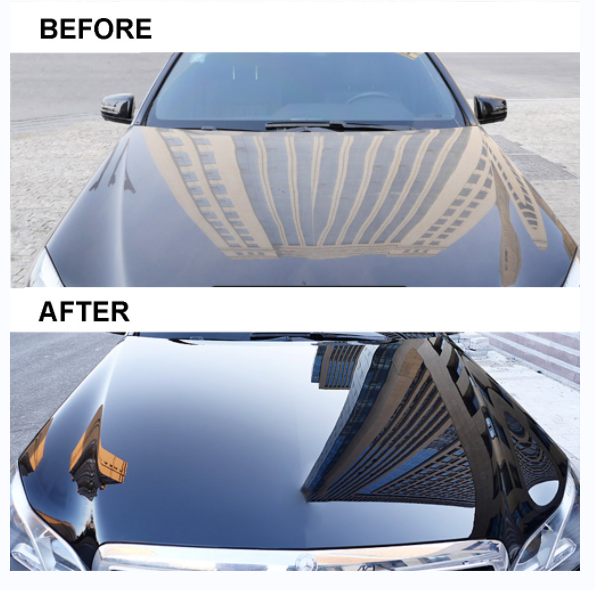Choose premium auto detailing for a thorough interior and exterior cleaning.
Choose premium auto detailing for a thorough interior and exterior cleaning.
Blog Article
A Comprehensive Overview to the Kinds Of Ceramic Finish on the Market
Ceramic layers have emerged as a critical service throughout different sectors due to their special residential or commercial properties and applications. As we explore the distinct attributes and applications of these finishes, the effects for efficiency and durability become progressively evident, raising questions regarding which type could finest suit your needs.
Comprehending Ceramic Coatings
Ceramic finishes are advanced safety remedies that have gotten popularity in different sectors, particularly in auto and aerospace applications. These coverings are composed of a liquid polymer that, when treated, creates a sturdy, hydrophobic layer externally of the substrate. This layer supplies boosted resistance to ecological contaminants, UV radiation, and chemical exposure, thus expanding the life and visual appeal of the underlying product.
The fundamental component of ceramic coverings is silica, which adds to their hardness and resilience. The application process normally involves surface area preparation, application of the layer, and treating, which can be achieved with warmth or UV light. When healed, ceramic layers display exceptional bonding residential properties, enabling them to stick strongly to a variety of surface areas, including steels, plastics, and glass.
In addition to their safety functions, ceramic coatings also supply ease of upkeep. Their hydrophobic nature minimizes the adherence of dirt and gunk, making cleansing less complex and less frequent. In general, the fostering of ceramic layers stands for a significant innovation in surface area defense innovation, giving both practical and visual benefits across numerous industries.
Kinds of Ceramic Coatings
Various kinds of ceramic finishes are offered, each developed to meet details efficiency needs and applications - scratch repair sarasota. The most typical kinds consist of:
Silica-based Coatings: These layers primarily contain silicon dioxide and are recognized for their durability and chemical resistance. They are commonly utilized in auto and industrial applications.
Titanium Dioxide Coatings: Renowned for their photocatalytic residential or commercial properties, titanium dioxide layers are frequently used in settings where self-cleaning and antifungal buildings are preferable, such as in building materials and automotive coatings.
Zirconia Coatings: Identified by their high-temperature stability and thermal resistance, zirconia finishings are utilized in applications such as turbine engines and high-performance auto parts.
Alumina Coatings: Displaying outstanding solidity and thermal security, alumina finishings are frequently made use of in wear-resistant applications, consisting of cutting tools and commercial machinery. - Car Detailing
Hybrid Coatings: Incorporating the residential properties of different materials, crossbreed finishings provide enhanced efficiency characteristics, making them suitable for one-of-a-kind and demanding applications.
Each kind of ceramic layer offers distinct functions, allowing individuals to select one of the most suitable remedy based on certain environmental conditions and performance demands.
Benefits of Ceramic Coatings
Coatings play a vital role in improving the performance and durability of surfaces throughout numerous markets. Ceramic layers, specifically, deal various advantages that make them progressively preferred among producers and customers alike. One of the key benefits is their outstanding sturdiness. These coatings are resistant to scrapes, chemicals, and UV rays, ensuring that the underlying surface remains safeguarded with time.
In addition to longevity, ceramic coverings offer exceptional hydrophobic residential properties, permitting for easy cleaning and upkeep. This water-repellent nature minimizes the adherence of dirt, grime, and other contaminants, which can prolong the aesthetic charm and performance of the surface. Ceramic finishings can substantially improve thermal resistance, making them excellent for applications that endure high redirected here temperature levels.

Application Refine
When applying ceramic coverings, a precise method is crucial to attain optimal outcomes. A tidy surface area makes certain appropriate attachment of the covering.
As soon as the surface is prepped, the following step is to apply the ceramic finishing. The covering must be applied in slim layers, as thicker applications can lead to irregular finishes.
After application, the finish needs a certain curing time, generally ranging from a couple of hours to a complete day, depending on the product. During this moment, it is important to avoid exposure to moisture or impurities. Ultimately, a gentle buffing may be required after healing to improve the gloss and get rid of any high spots. Following these actions diligently will optimize the efficiency and long life of the ceramic coating, supplying a resilient safety layer for the surface.
Upkeep and Long Life
To make certain the durability and performance of a ceramic finishing, routine maintenance is crucial. Ceramic finishes, known for their longevity and protective top qualities, require details care routines to optimize their lifespan and performance.
In enhancement to regular cleaning, regular evaluations are vital. Try to find indications of wear or damage, such as hydrophobic buildings decreasing or surface flaws. If needed, a light gloss may be related to renew the finishing without stripping it away.
In addition, the application of a booster spray can enhance the finishing's hydrophobic effects and restore its gloss. This is specifically advantageous for finishes that have remained in use for a prolonged period. Eventually, by sticking to these upkeep methods, one can significantly extend the life of a ceramic covering, making sure that it remains to supply optimum protection versus environmental aspects and preserve like it the aesthetic appeal of the vehicle.
Conclusion

Report this page